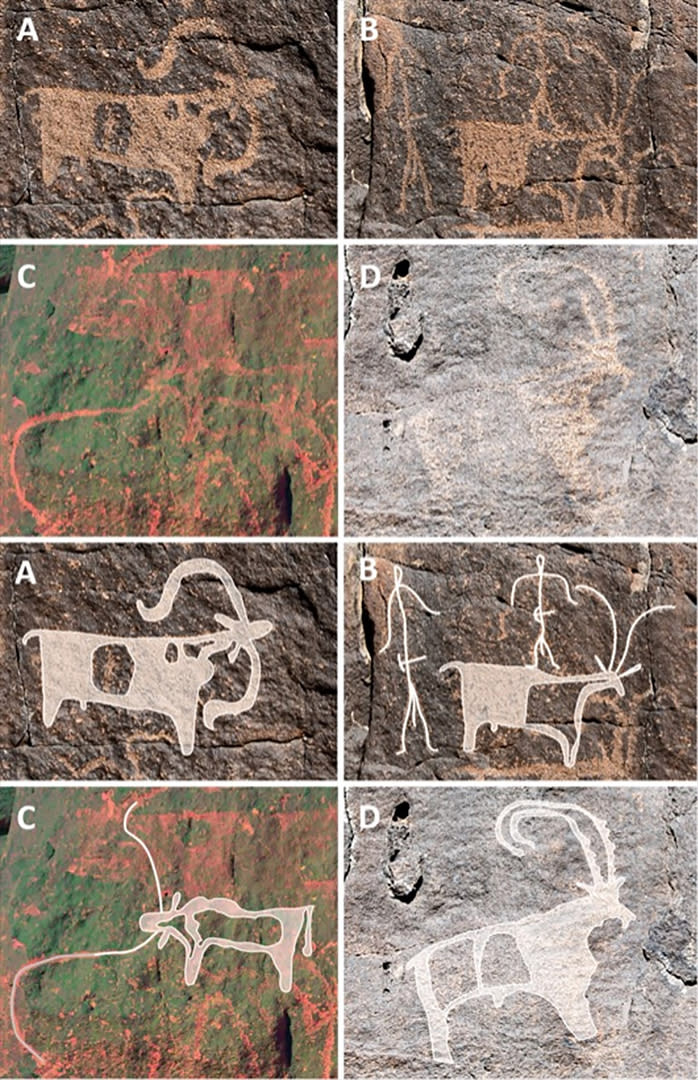Archaeologists in Saudi Arabia have discovered that people lived in a lava tube at least 7,000 years ago and possibly earlier, a new study shows.
The lava tube, named Umm Jirsan, is located in a volcanic field called Harrat Khaybar, about 125 kilometers north of Medina, researchers said in a statement.
“Umm Jirsan is currently the longest reported lava tube in Arabia in terms of the horizontal length of passages, at 1481 meters [4,859 feet],” the scientists wrote in the article published Wednesday (April 17) in the journal PLOS One.
Although ancient humans are known to have lived on the Arabian Peninsula in prehistoric times, organic remains are scarce due to poor preservation in the arid region. So the researchers looked for areas where artifacts would have been preserved because they were sheltered from the sun, wind and wild temperature changes over the millennia. Umm Jirsan met these criteria, so the team decided to look there.
Their hunch turned out to be right. They found artifacts such as fragments of fabric and carved wood; petroglyphs of domesticated animals; and the skeletal remains of nine human bones. These finds suggest that humans have inhabited the lava tuba for at least the past 7,000 years and possibly as long as 10,000 years, according to radiocarbon dating and optically stimulated luminescence dating, which examines when certain minerals were last exposed to heat or sunlight. Some dates are relatively recent and the tube appears to have been used into modern times, Stewart said.
The people who used the lava tube left behind a few clues about their lives. These include bones of domesticated sheep and goats, as well as petroglyphs depicting these animals, suggesting that these creatures held the key to human survival. A chemical analysis of the human remains showed an increase in certain plants, such as grains and fruits, over time, possibly due to an increase in oasis agriculture during the Bronze Age, the team said in the statement.
However, the analysis suggested that people did not live in the lava tube for long periods at a time. “The lava tube does not appear to have served as a permanent habitation site, but rather as a site that was likely on pastoral routes and allowed access to shade and water for passing pastoralists and their animals,” the authors wrote in the study. “Before this, but also during pastoral periods, the lava tube was probably also linked to hunting activities, which probably remained a cornerstone of the local economy until the Bronze Age.”
Lava tubes form when lava creates underground passageways that can transport large amounts of molten rock; when the lava supply stops or if the lava is diverted elsewhere, the empty tube is left behind, according to the National Park Service. And while they may sound inhospitable, they can be a good source of shelter. Scientists from JAXA, the Japanese space agency, have suggested this, for example future humans could live in lava tubes on the moon.
Study co-author Mathew Stewarta researcher at the Australian Research Center for Human Evolution at Griffith University in Australia, said lava tubes such as these are still used by modern humans in the region, “whether for keeping animals together, gaining access to water sources or simply for leisure,” Stewart told LiveScience in an email.
Related: 4,000-year-old wall found around oasis in Saudi Arabia probably defended ‘against nomad raids’

It is difficult to say when Umm Jirsan was last filled with lava, Stewart said, although there has been occasional volcanic activity in the region. “There have been about 1,500 volcanic eruptions in Arabia in the last 1,500 years, and many more in ancient times,” Stewart said.
Scientists not involved in the study spoke positively about the team’s work. It is “wonderful work from this team who have built a strong reputation for excellent fieldwork and interpretation.” Gary Rollefson, a professor emeritus of anthropology at Whitman College and San Diego State University, told LiveScience in an email. “While the excavation has yielded relatively few artifacts and faunal remains, the material nevertheless reveals strong connections to material recovered in other parts of northern Saudi Arabia,” Rollefson said, noting that there are similarities with material recovered from parts of Jordan has been excavated.
RELATED STORIES
– Arabia was ‘the keystone’ of early human migrations out of Africa, research suggests
—Entire cities could fit inside the moon’s monstrous lava tubes
– 7,000-year-old animal bones and human remains found in enigmatic stone structures in Arabia
Anthony Sinclair, a professor of archaeological theory and method at the University of Liverpool in Britain, said in an email that in addition to providing shelter, the lava tube would have been a “defensible position – in terms of allowing of the shepherds to protect their flocks.” at night against local predators. There would have been wolves, hyenas and possibly lions and leopards throughout Arabia.’ Today, some of these animals are endangered or no longer present in Arabia.






